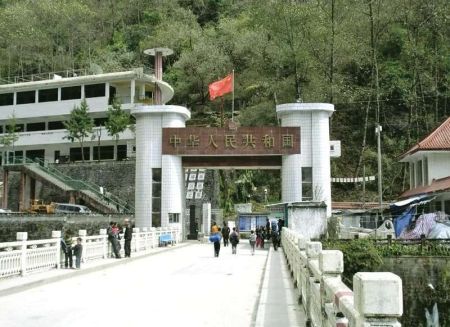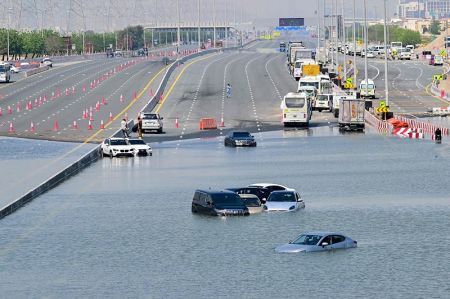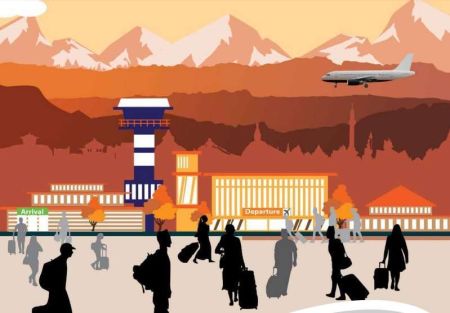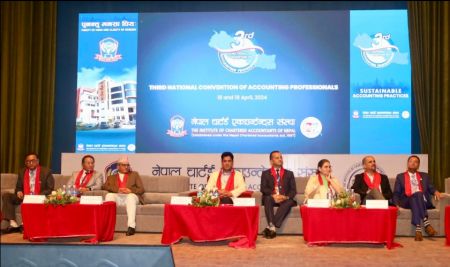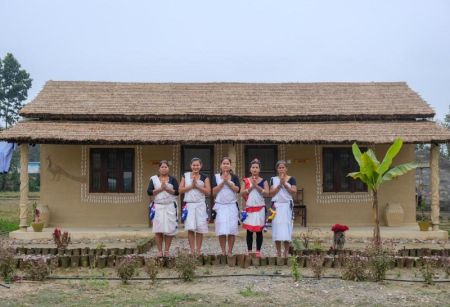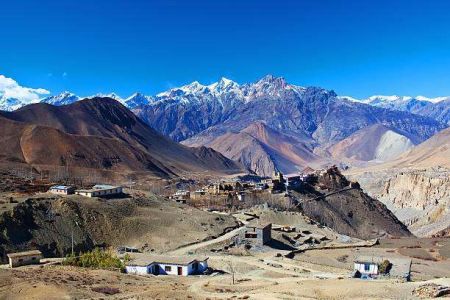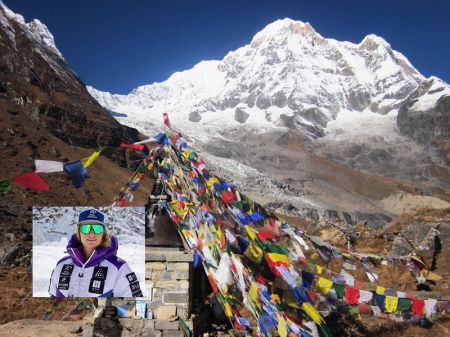Raw Material Dependency on India Increases
Nepal’s dependency on India for industrial raw material has further increased in fiscal year 2013/14. According to the 10th industrial census report published by the Central Bureau of Statistics, Nepal’s raw material import bill from India was more than double the bill for similar imports from rest of the world combined. The report also shows that the quantity as well as the value of Nepal’s total raw material import from India is higher than what is sourced from within the country.
More than 4,000 Nepali industries imported raw material worth Rs 91.73 billion during the review period. Out of this, the import from countries other than India stood at Rs 39.94 billion. Likewise, figures show that the industries used locally sourced raw material worth Rs 84.89 billion over this period.
Steel wire and alloys were the most imported raw material from India. Industries imported 2.32 million quintals of steel wire and alloys worth Rs 21.44 billion from India while during the same period they used only 87,800 quintals of this raw material sourced from within the country.
With Rs 15.29 billion worth of import, raw material needed for steel production was the second highest imported raw material from India. Similarly, cement clinker was the third most imported raw material from the Southern neighbour. A total of 14.8 million quintals of cement clinker worth Rs 8.57 billion was imported during the review period.
The report also shows that Nepal is heavily dependent on India for the raw material needed to produce metal wires and plastic products with import of Rs 6.17 billion and Rs 3.95 billion worth of these raw material respectively. However, the metal wire industries also consumed local raw material worth Rs 430 million.
On the brighter side, the report said that Nepal has become self-dependent in agro-based products with the country producing enough rice, wheat, maize and sugar to meet the domestic needs. With Rs 19.71 billion worth of locally produced rice and Rs 550 million of imported rice from India, rice was the most used raw material in the Nepali food industry. Next to rice, sugar, wheat, and maize were the most used local raw material during the review period.
NTB-FHEA Collaborate for Tourism Promotion
Nepal Tourism Board (NTB) and Federation of Hotel Entrepreneurs (FHEA) have decided to work collectively on tourism promotion programmes to be organized at national and international levels. Amrit Bhujel, president of FHEA and Subash Niroula, CEO of NTB signed a five-year agreement to this effect.
According to the agreement, the entrepreneurs and staff members of the hotels associated with FHEA will receive long- and short-term capacity building training from NTB, while FHEA will assist NTB in tourism promotional activities. Both parties have agreed to provide tourists with information on different heritages across the country through suitable media. For this, FHEA member hotels will establish tourism information centres at the regional level. Along with that, NTB has agreed to have FHEA representatives in all tourism exhibitions organized by it and prioritize tourism activities at the regional level.
FATF Removes Nepal from Monitoring List
The Financial Action Taskforce (FATF) has removed Nepal from its monitoring list. This decision was taken in its recently held Paris conference considering the actions taken by Nepal on anti-money laundering and combating terrorist financing. Nepal has developed and implemented the required legal infrastructure as committed to FATF.
The 38 member countries present at the conference decided to remove Nepal from the monitoring list on the basis of the report prepared by the FATF on-sight mission that visited Nepal last December. To fulfil the criteria, Nepal had ratified five acts –Anti-Money Laundering Act, Mutual Legal Assistance Act, Freezing, Controlling and Confiscation of Assets from Proceed of Crimes Act, Extradition Act and Organized Crime Control Act. Along with that Nepal had introduced a five-year long national policy to control terrorist financing and money laundering.
The removal will help in alleviating Nepal’s standing in international business, financial transactions, direct foreign investment and foreign aid.
Industrial Growth Fluctuates in East
Industrial growth in major industrial districts of Eastern Nepal – Morang and Sunsari has witnessed a fluctuation. The 10th National Census of Manufacturing Establishments - 2011/12(NCME) reports that the number of large industries in Morang district declined by 14 percent and that in neighbouring Sunsari increased by an equal percent than in 2006/07, the time during which the 9th edition of the same report was prepared.
Within the five-year review period, 40 large industries were closed in Morang district bringing down the number of total industries in the district to 255, the report stated, while adding that the number of industries in Sunsari grew to 246 during the same period. The Central Bureau of Statistics (CBS) publishes the report every five years.
Citing the report, Anil Sharma, under secretary at the CBS, pointed that 93 percent of all large industries have faced problems in operation due to the lack of electricity.
Clothes, books, petroleum products processing, metals and medicinal equipment production industries declined during the review period while industries manufacturing edibles including milk and drinks increase.
A total of Rs 30.58 billion was invested in the 255 large industries of Sunsari district, which manufacture goods worth Rs 37.99 billion annually. Despite the decline, the report claimed that the existing large industries in Morang contribute 9.2 per cent to the national economy. These large industries in Morang have fixed assets worth Rs 6.76 billion, and every year, an average of 550 million rupees worth of assets are added.
The report reveals that there are 4,076 large industries in the country.
Lumbini Area Development Plan Gets Comprehensive
The Lumbini Area Development Plan (LADP) has been reviewed to make it more comprehensive so as to develop the whole region into a regional tourist destination and Lumbini as a tourism hub.
The plan includes adding Palpa as a core part of the development plan along with Rupandehi, Kapilvastu, and Nawalparasi districts. The inclusion of Palpa in the core plan is expected to help in developing tourism potential of the region. The plan is part of an Asian Development Bank project and is expected to develop the whole Western Development Region, the Ministry of Culture, Tourism and Civil Aviation (MoCTCA) said.
As per the plan to develop Lumbini as a regional tourist destination, nearby areas will be developed in terms of infrastructure, accommodation, information and security along with transforming the existing Gautam Buddha airport in Bhairahawa into an international (regional) airport.
A five-member experts’ team comprising tourism expert Ram Chandra Sedhain, archaeologists Jharna Joshi and Bachhu Narayan Shrestha, cultural expert Dr Geetu Giri and GPS expert Dambar Singh Pujara has been formed for preparing a five-year work plan and a 10-year vision within the next three months, said Purna Chandra Bhattarai, joint secretary at the MoCTCA .
The plan aims at bringing in two million tourists to Lumbini over the next 10 years. To fulfil this objective, the project will be implemented immediately, AjitmanTamang, member secretary of Lumbini Development Trust (LDT) said.
The focus of the project is to develop tourism potentials and infrastructure and to attract tourists visiting Lumbini to Palpa, Pokhara, Chitwan, Mustang, Jomsom, Dhorpatan, Swargadwaari, Bardiya, Rara Lake and Kailash Mansarobar.
Team leader Sedhai, informed that the plan envisages to develop important areas related to Buddha and Lumbini – Tilaurakot, Devdaha and Ramgram – as tourism centres and develop Palpa, Butwal, Bhirahawa and Belhiya as centres for entertainment, shopping and sports. He said that new tourism possibilities in Rupandehi, Kapilvastu, Nawalparasi and Palpa districts will be explored.
Elaborating on a few tourism possibilities in the area, he pointed to the possibility of paragliding in the Chure Hills near Butwal, cycling in Dovan area, bungee-jumping in Tinau and Ridi, an international cricket ground in Butwal area, and trekking and cable car in Basanatapur and Nuwakot.
Shrestha Elected NCC President
The 60th Annual General Meeting (AGM) of Nepal Chamber of Commerce (NCC) unanimously elected Rajesh Kaji Shrestha as its president along with a 33 working committee, which includes 23 members from the trading sector and 10 from the industrial sector. Though the election was supposed to be held a year ago, it was postponed because of some internal disputes.
Call for Effective Insolvency Law
Stakeholders have stressed on the need to formulate an insolvency law as soon as possible, claiming that the lack of such a law has been disrupting many insolvency related procedures.
In lack of such laws, an organization’s liquidation process is being stretched while delaying return of money of the depositors and investors’, said Bharat Raj Upreti, former justice of the Supreme Court addressing an event organized by Nepal Insolvency Practitioners' Association (NIPA) and National Banking Institute (NBI) in collaboration with Nepal Rastra Bank (NRB). A law related to insolvency must incorporate banking and financial institutions, insurance companies, cooperatives and other private companies, he added and called for establishing a separate commercial court to ensure effective implementation of such laws.
Governor of Nepal Rastra Bank, Yuba Raj Khatiwada said upcoming amendment of the Bank and Financial Institutions Act (BAFIA) “will include some aspects of insolvency law.” He however cautioned that the proposed amendments “will still not be enough” for addressing insolvency issues.
James Heregan, President of Insol International, stressed on the need for skilled judges as well.
Construction Entrepreneurs Preparing for Agitation
Construction entrepreneurs have prepared for agitation as the 45-point agreement signed between the government and Federation of Contractors Association of Nepal four years ago could not be implemented. The Federation has formed a protest committee under the Coordination of President Jayram Lamichhane. If the government fails to implement the agreement by July 28, then there remains no alternative to calling for protest, Lamichhane informed New Business Age. Likewise, the Federation has also requested to implement the agreement within 21 days.
Putting forward a 45-point demand, the federation had launched an agitation on February 8, 2009 saying that they should be allowed to participate in tender even without qualification for projects worth up to Rs 60 million. Following the agitation, the government and the Federation had reached an agreement on November 19 2009 to open the construction of up to Rs 20 million and also to simplify the construction of up to Rs 60 million. However, the failure of the implementation of the agreement has affected small budget projects in all the 75 districts, according to the Federation.
The Federation has further claimed that this has rendered 16,000 small construction entrepreneurs jobless.
The Federation demands that the Review Committee formed as per the Public Procurement Act must have members related to the construction sector. The Federation has also demanded the participation of construction entrepreneurs while drafting policies, rules and regulations related to the construction sector. Similarly, other demands include: taking necessary initiative to ensure the minimum partnership of local construction entrepreneurs and investors in construction works by amending the policies related to public-private partnership concept; mandatory representation of FNCCI in the National Development Council; removing construction business from the service sector and granting it the full industry status; and providing the construction entrepreneurs their due amount.
Trade Sector to be Classified
Nepal’s trade sector is going to be classified into three categories— domestic, regional and international. Sunil Bahadur Thapa, Minister of Commerce and Supply, while claiming that the classification will help in ensuring industrial growth, said that the government has already started reviewing the Trade Policy 2065 for introducing the classification.
Thapa said that the ministry has been discussing the issue in the Trade Board and in inter-ministerial meetings for reviewing the existing commerce policy and for suggestions to make it more effective.
The ministry is presently reviewing the Nepal Integrated Trade Strategy (NITS)-2010, he added. NITS -2010 has prioritized 19 different goods and services on the basis of their competitive advantage. It has been four years since the strategy was put into implementation. Over this period, manufacturing of some goods has received priority but the service sector has fallen under shadow.
The size of Nepal’s trade in the current fiscal till the date of April 19 is nearly Rs 659 billion, with exports and imports standing at Rs 75.2 billion Rs 584 billion, respectively.





